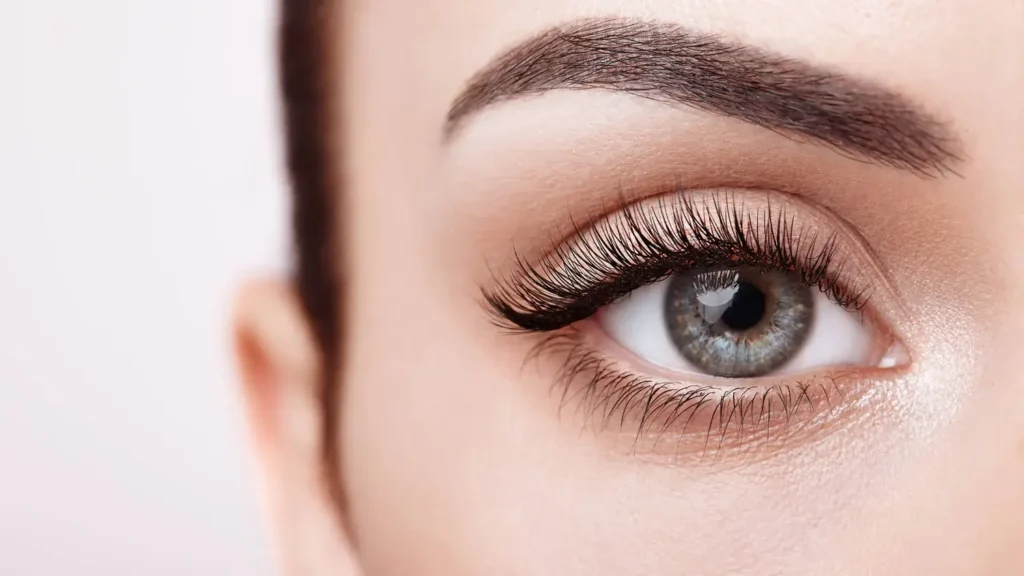Table of Contents
When Do Eyelashes Stop Growing?
Eyelashes contribute significantly to our general look and self-esteem in addition to serving as a protective barrier for our eyes. Ever wonder how long eyelashes will last? Or maybe you want to know how to take care of them as they grow. This article examines eyelash growth patterns, growth-influencing factors, and ways to keep eyelashes healthy throughout their life cycle.

The Stages of Eyelash Growth
Anagen, catagen, and telogen are the three primary stages of the natural growth cycle that eyelashes, like our hair, go through.
Anagen Phase: The Stage of Growth
The eyelash cycle’s active growing phase is known as the anagen phase.
Duration: Eyelashes go through this stage in about 30 to 45 days, which is a lot less time than the hair on our heads.
Growth Rate: Eyelashes may develop between 0.12 and 0.14 millimeters every day during this time.
Did you know? Genetics, hormones, and even the environment can all affect how quickly eyelashes grow.
Catagen Phase: The Period of Transition
Eyelashes move into the catagen phase following the anagen phase.
Duration: Only two to three weeks make up this transitory phase.
What Takes Place: Slow growth results from hair follicles shrinking and separating from the hair shaft.
Although it’s an important stage of the lifecycle, you won’t see much change in the length of your eyelashes throughout the catagen phase.
The resting phase, or telogen phase
The eyelash cycle’s resting phase is known as the telogen phase.
Duration: For eyelashes, this stage may last up to 100 days.
Lifecycle Completion: The old eyelash is now prepared to shed, allowing for the emergence of new growth.
Every eyelash goes through these phases independently, which is why you may notice some lashes are shorter or longer at any given time.

Factors Influencing Eyelash Growth
Although eyelashes have a natural cycle, a number of factors can affect their health and growth.
Genetics
The speed and density of your eyelash growth are greatly influenced by your genetic composition. You may also be fortunate enough to acquire long, thick lashes from your relatives.
Age
Our hair, particularly our eyelashes, starts to thin as we get older. Additionally, the development cycle slows down, so your once-full lashes might not be as strong.
Nutrition and Health
Healthy eyelashes are encouraged by a vitamin- and mineral-rich, well-balanced diet. Important nutrients consist of:
Biotin: Promotes the development and strength of hair.
Vitamin E: Assists in keeping follicles healthy.
Iron: Helps women in particular from losing their lashes.
Hormones and Stress
The natural growth cycle can be disturbed by stress and hormonal changes. Hormonal changes, such as those that occur during pregnancy or menopause, can affect hair density and growth rates, and stress can cause hair loss.
Tips for Maximum Growth of Eyelashes
Take into account the following maintenance advice to encourage healthy eyelash growth and prolong their lifespan:
- Mild Cleaning Makeup should always be removed gently. To keep your lashes clean without breaking them, use a makeup remover made especially for the eye area.
- Food To promote growth and preserve health, think about utilizing eyelash serums that include peptides, vitamins, or natural oils.
- Steer clear of too much mascara or curling. Fragile eyelashes might result from extensive mascara application or constant curling. When wearing a lot of makeup, try to give your lashes breaks.
- To promote hair development, include diets high in Omega-3 fatty acids, vitamins, and protein. Leafy greens, fruits, nuts, and seafood are among the options.
Expert Medical Care Consult a dermatologist about safe alternatives like growth serums or lash extensions if you’re searching for longer-term fixes.
Conclusion: Embrace Your Luscious Lashes
You can better appreciate and take care of your lashes if you know the lifecycle of eyelash growth. Knowing how to care for and protect them can have a significant impact on their look and overall health, even though they naturally stop growing after reaching their maximum length during the telogen period.




